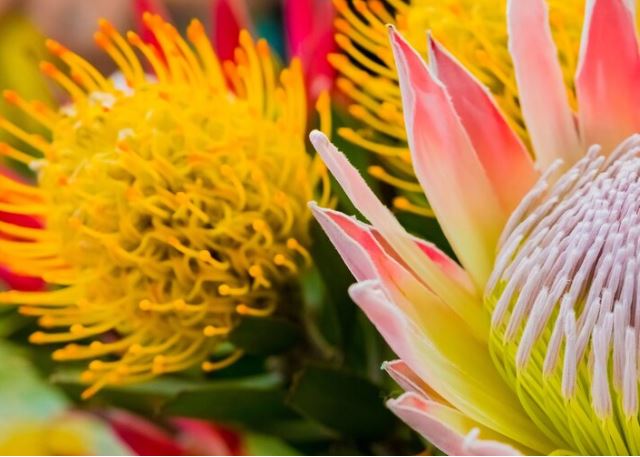
Angiosperm plants are the most diverse and widespread group of plants on earth. They are characterized by their unique reproductive structure, which includes flowers and fruits. These structures help angiosperms to attract pollinators, reproduce efficiently, and disperse their seeds. Angiosperms are divided into two main groups, monocots and dicots, based on the number of cotyledons in their seeds. In this article, we will explore the different types and characteristics of angiosperm plants, their reproductive structures, and adaptations for survival.
Types of angiosperm plants – monocots and dicots
There are two main types of angiosperm plants, monocots, and dicots. These terms refer to the number of cotyledons, embryonic leaves, found in the seed of the plant. Monocots have one cotyledon, while dicots have two. The differences between monocots and dicots go beyond their cotyledon number and extend to their leaves, stems, and roots.
Characteristics of monocots
Monocots are characterized by their long, narrow leaves with parallel veins. Their stems are usually unbranched and have scattered vascular bundles. Their root system is fibrous, consisting of many thin roots that grow from the base of the stem. Monocots also have flowers with petals in multiples of three.
Examples of monocots
Monocots include some of the most economically important plants, including grains such as rice, wheat, and corn. Other monocots include grasses, lilies, orchids, and palms.
Characteristics of dicots
Dicots are characterized by their broad, flat leaves with net-like veins. Their stems are usually branched and have vascular bundles arranged in a ring. Their root system is taproot, consisting of a thick central root with smaller lateral roots. Dicots have flowers with petals in multiples of four or five.
Examples of dicots
Dicots include many of the plants we commonly see in gardens and parks, such as roses, sunflowers, and daisies. Dicots also include many fruits and vegetables, such as tomatoes, cucumbers, and apples.
Importance of angiosperm plants
Angiosperm plants play a vital role in the ecosystem by providing food and shelter to a vast array of animals, including humans. They are the source of many of the world’s most important crops, including grains, fruits, and vegetables. Many of our medicines also come from angiosperms, including aspirin, morphine, and digitalis. Angiosperms also play a crucial role in maintaining soil stability and preventing erosion.
Angiosperm plant reproduction
Angiosperms have unique reproductive structures that have evolved to attract pollinators and ensure efficient reproduction. The male reproductive structure of the plant is the stamen, which consists of the anther and filament. The anther produces pollen, which contains the male gametes. The female reproductive structure of the plant is the pistil, which consists of the stigma, style, and ovary. The stigma is the sticky, receptive surface that receives the pollen. The style is the long, slender tube that connects the stigma to the ovary. The ovary contains the female gametes and develops into the fruit after fertilization.
Pollination can occur through a variety of methods, including wind, water, and animals. Many angiosperms have evolved to attract specific pollinators, such as bees, butterflies, and birds. The pollinator transfers the pollen from the anther to the stigma, where it fertilizes the female gametes and initiates seed development.
Threats to angiosperm plants
Angiosperm plants face a variety of threats, including habitat loss, climate change, invasive species, and disease. Human activities such as deforestation, urbanization, and agriculture are major drivers of habitat loss and fragmentation. Climate change is also affecting angiosperm plants, altering their flowering times and distribution patterns. Invasive species can outcompete native plants for resources, leading to their decline. Diseases such as Dutch elm disease and chestnut blight have decimated entire populations of angiosperm trees.
Conclusion
Angiosperm plants are the most diverse and widespread group of plants on earth. They play a vital role in the ecosystem by providing food and shelter to a vast array of animals, including humans. Angiosperms have unique reproductive structures that have evolved to attract pollinators and ensure efficient reproduction. However, they face a variety of threats, including habitat loss, climate change, invasive species, and disease. As we continue to study and appreciate these fascinating plants, we must also work to protect them and their habitats for future generations.


